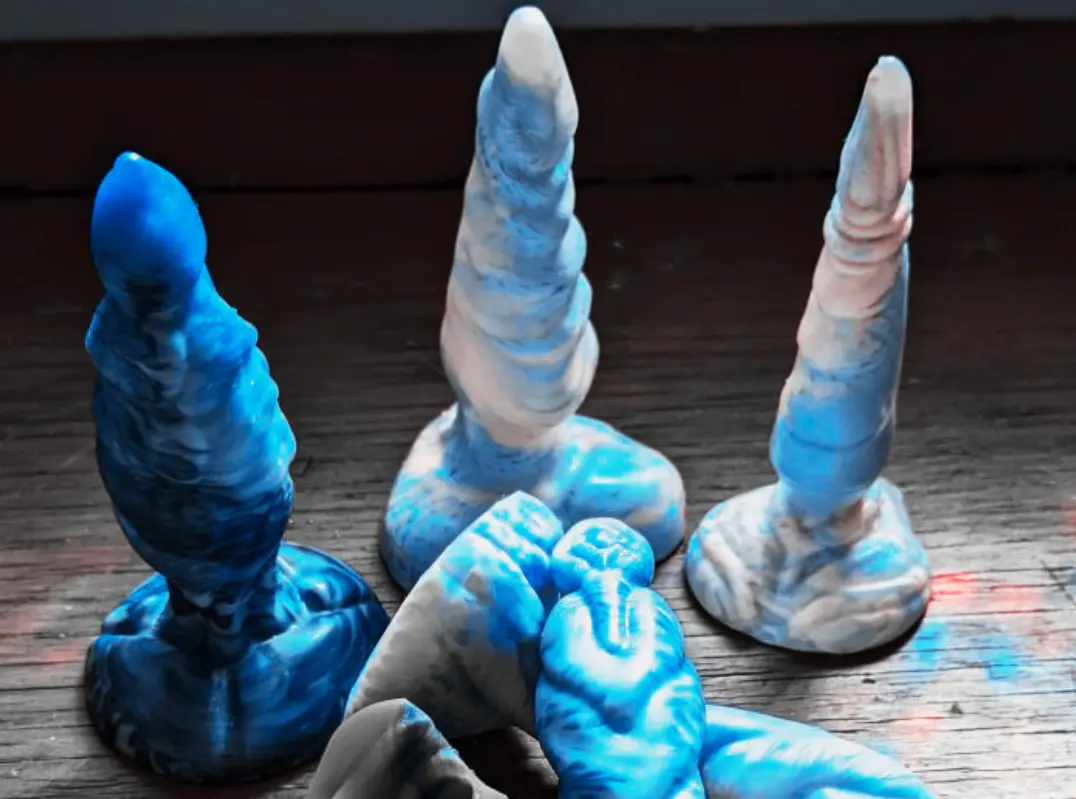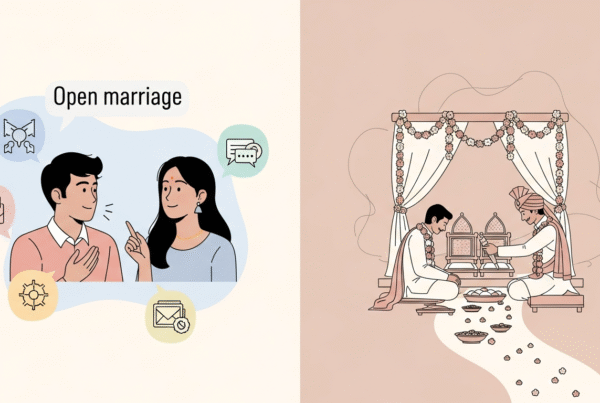Monsters in the bedroom are not an invention of the internet. They have always been with us. The yakshinis who lured wanderers into the forest with promises of pleasure. The nagas who coiled around lovers in a grip both protective and suffocating. The apsaras who could seduce gods and mortals alike. The rakshasas who embodied hunger and sex as two sides of the same desire. Greek mythology gave us swan seductions. Japanese shunga gave us octopus entanglements. European folklore gave us incubi and succubi creeping into dreams. Whenever humans wanted to talk about sex that was too unruly, too frightening, too much, they gave it wings, fangs, or scales. The monster has always carried the burden of desire so that we did not have to admit it belonged to us.
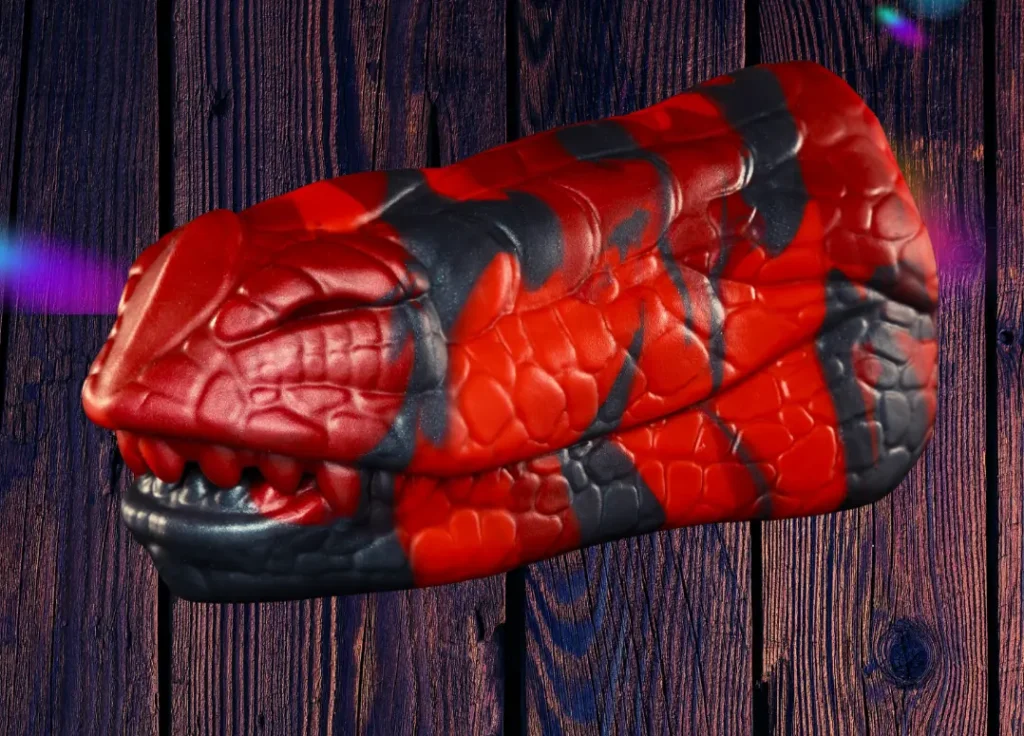
Today, the monsters live in silicone. Tentacle dildos that ripple with ridges. Dragon cocks with flared knots. Ovipositors that push soft gelatin eggs into the body. Companies like Bad Dragon, Cute Little Fckers, and Primal Hardware sell them in every colour from glitter pastel to glow-in-the-dark swamp green. They look less like genitals and more like props from a sci-fi set, yet they sit in bedside drawers and arrive discreetly in brown boxes. They are proudly inhuman, and that is exactly why they are loved.
Mainstream toys spent decades trying to pass. Flesh-toned vibrators shaped like penises. Discreet “massagers” marketed as therapeutic rather than erotic. Products that reassured buyers they were normal. Monster toys laugh at that. A tentacle dildo does not pretend to be realistic. An ovipositor does not pretend to be useful. They are not there to replicate what bodies already do. They are there to imagine what bodies could do if the rules were different.
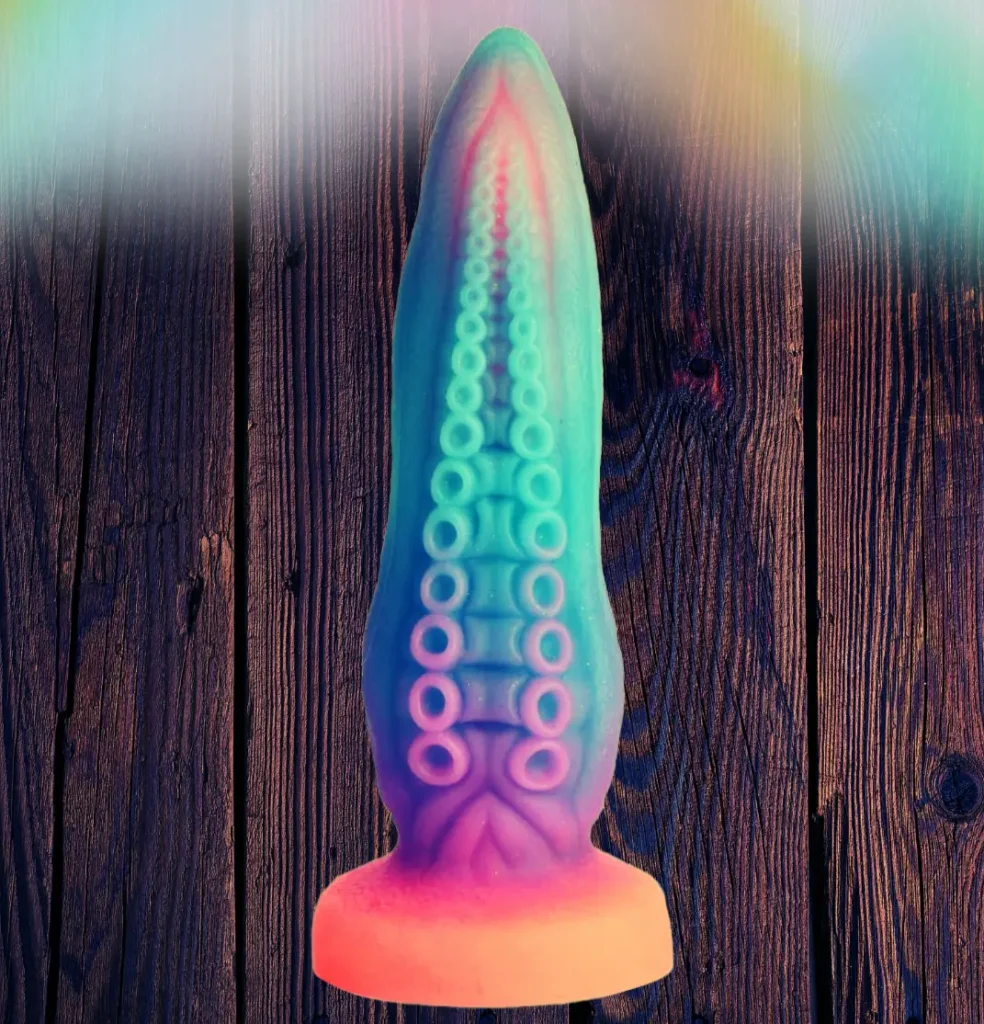
That imagination has always been queer. Queer not only in terms of who we desire, but queer in the older sense of the word — slantwise, sideways, defiantly odd. To take a dragon dildo into your hands is to say sex does not need to be reproductive, respectable, or recognisable. To slide gelatin eggs inside your body is to play with pregnancy, incubation, fullness, release, all without the script of gender or biology. These toys dismantle the idea that only certain bodies can carry, that only certain acts are “natural.” A cis man can become a vessel. A trans woman can play with impregnation without biology gatekeeping her. A nonbinary person can invent entirely new roles. This is not about imitating nature. It is about inventing futures.
And those futures are not sterile. They are playful. Cute Little Fckers sells cartoonish aliens with friendly faces. Bad Dragon was born out of furry and fantasy fandoms where queer and trans communities built safety. Even the ovipositor, that most “outrageous” of toys, is often used with laughter. The eggs are harmless, melting away in warm water, but the ritual feels transformative, like stepping into a myth that belongs only to you.
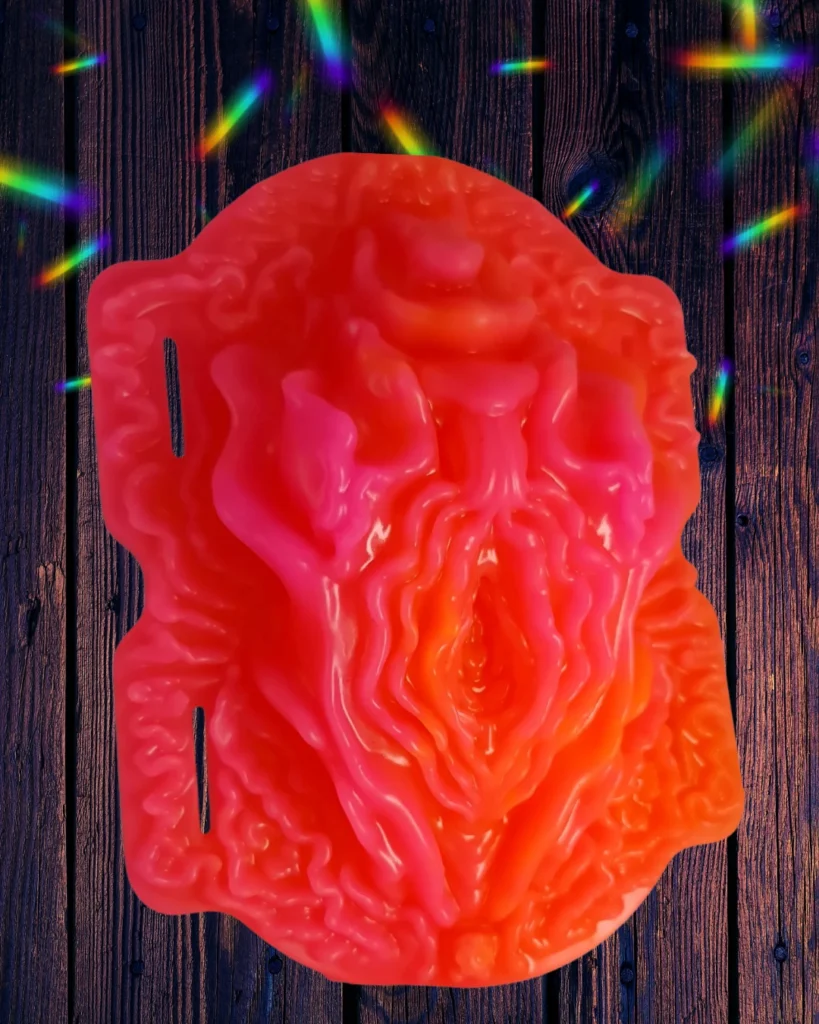
For some people, especially survivors of sexual assault, monster toys can offer a rare kind of safety. To desire a dragon or an alien is to take sex out of the realm of human faces, human expectations, human harms. It creates a distance from the scene of hurt, while still leaving the door open for pleasure. With a tentacle or ovipositor, intimacy no longer has to be tied to the shape of a body that once betrayed you. Desire becomes something you can invent anew, free from the scripts that once felt dangerous. That freedom matters.
Indian culture has its own relationship with these desires. Our pulp horror novels of the 70s and 80s often mixed sex and monsters in lurid paperback covers. Bollywood’s B-grade horror films regularly offered witches, demons, and shapeshifters who were as erotic as they were terrifying. Even the epics never fully separated lust from the inhuman: tantric practices embraced gods and demons uniting in half-animal forms, while folk traditions treated the sexual power of the yakshini or the chudail with both fear and fascination.
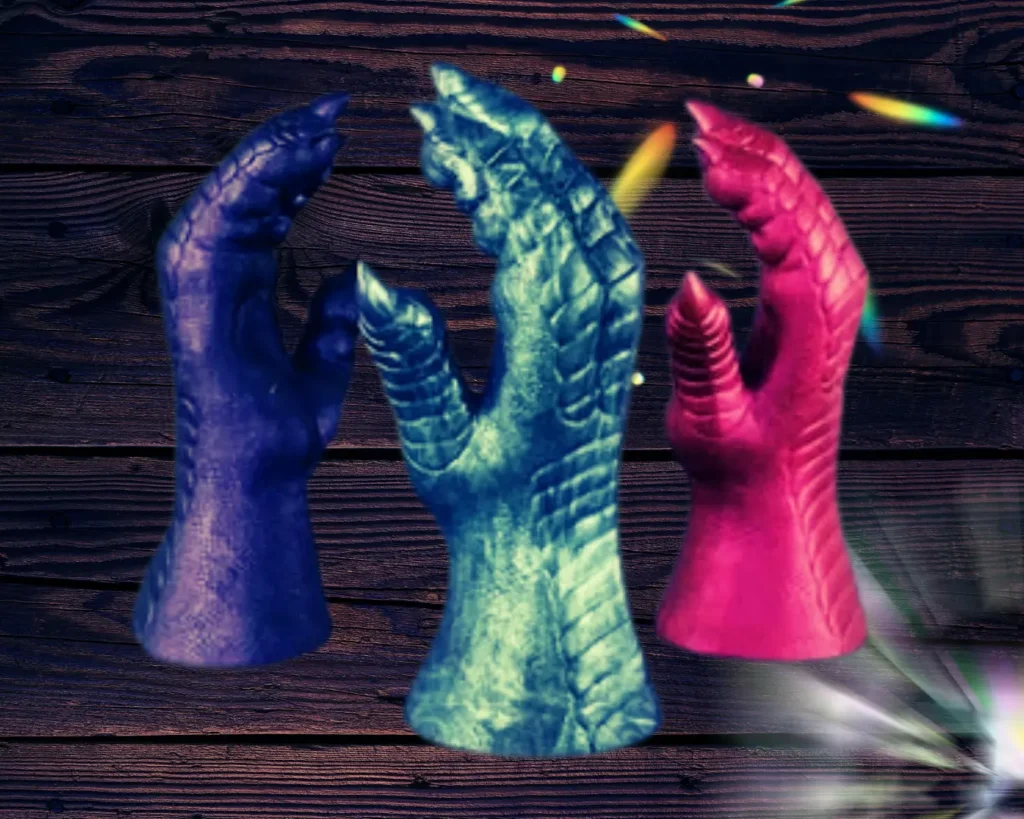
Blaft Publications captured this legacy in 2011 with Kumari Loves a Monster, a bilingual picture book by Rashmi Ruth Devadasan and Shyam. Each spread paired a short poem in English and Tamil with Shyam’s gloriously kitschy paintings of beautiful young women dating gruesome, sometimes comically grotesque monsters. The maidens in these pages had beauty, brains, and talent, and they passed the time with boyfriends who were equal parts fierce and gallant. It was romantic, absurd, and tender all at once — a reminder that India too has long imagined what it means to be held by the inhuman.
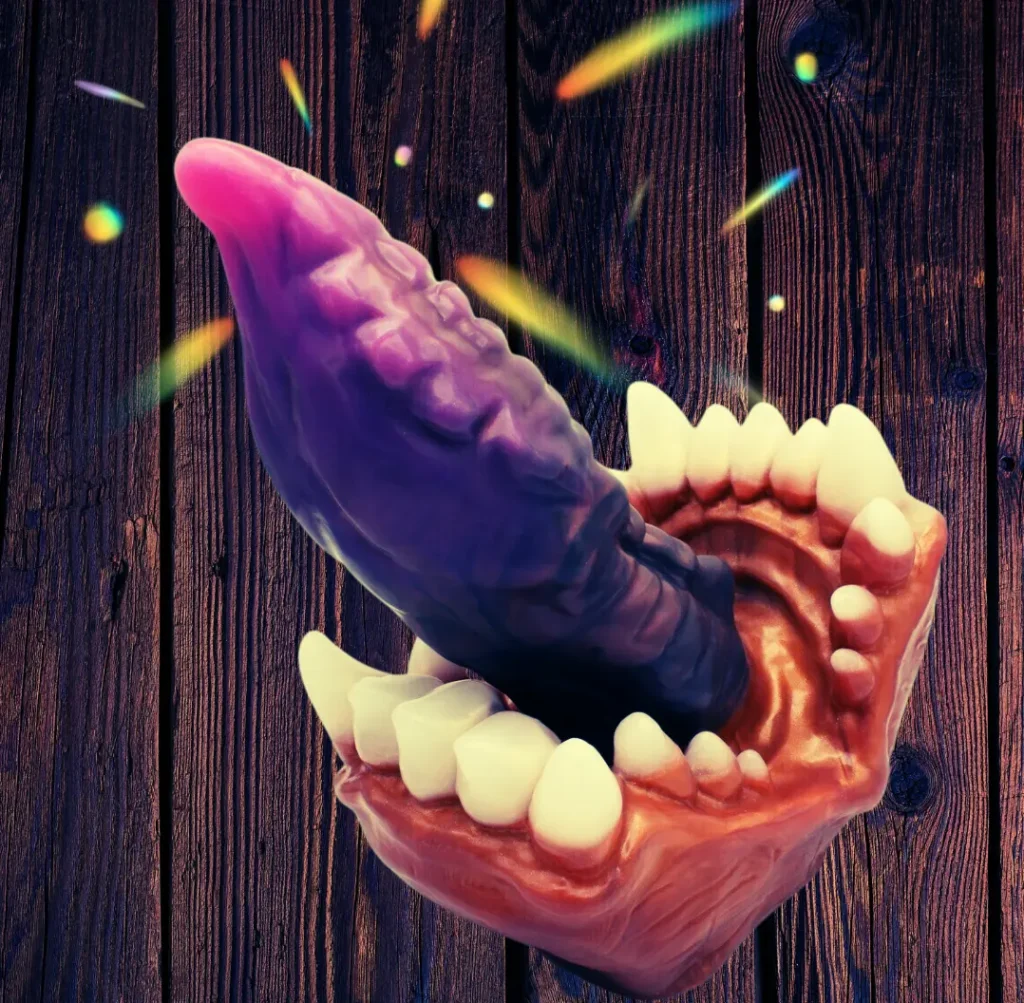
So when someone today buys a dragon dildo or an ovipositor, it is not a deviation from culture. It is a continuation. It is the same impulse that made our ancestors tell stories of serpent lovers and forest seductresses. The same impulse that made poets describe Kali not only in terms of terror but also in terms of generative, erotic force. The difference is that now, instead of being trapped in myth, the monster can be held in your hand, laughed with, played with, and yes, fucked.
And here’s the truth that matters most: this isn’t about queerness being strange. It’s about strangeness being human. Everyone has desires that spill out of the neat little boxes culture tries to put them in. Everyone dreams beyond biology. Queerness just refuses to apologise for it.

To choose the monster is not to step outside humanity. It is to claim humanity in its fullest form — imaginative, unruly, creative, hungry. Monsters in the bedroom are proof that sex is not a fixed act but an ongoing story. A story we get to tell ourselves, in our own bodies, in our own fantasies, with whatever colours and textures and eggs and tentacles we want. If that looks strange to someone else, good. Strange is not the opposite of normal. Strange is the opposite of shame. And nothing is more human than wanting to be free.


